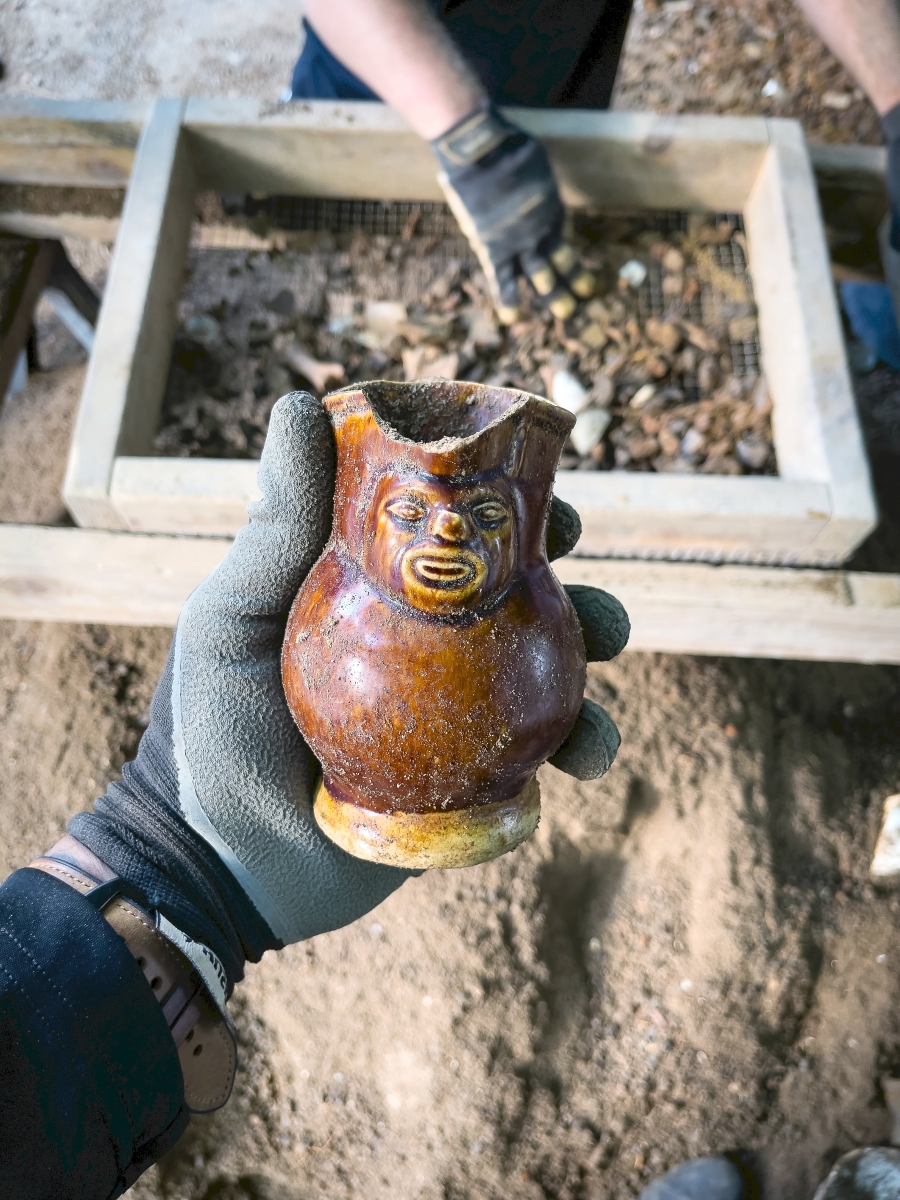
Evan Woodard, founder of Salvage Arc.
Evan Woodard is an explorer, photographer and historian based in Baltimore, Md., who founded the excavation company Salvage Arc in 2020. Woodard and his team dig through forgotten homesteads, rubbish dumps and privies, all with the respective property owner’s permission, discovering treasures that would otherwise be destroyed or lost through real estate and land development. Documenting Salvage Arc’s finds for about 25,700 followers of its Instagram account, Woodard also posts videos on YouTube that record the company’s relic hunts, including the stories of the artifacts found therein. Recently, he has been repurposing some of his finds and selling them on the Salvage Arc website. Antiques and The Arts Weekly caught up with Woodard for a conversation via Zoom.
What first inspired you to go digging for history?
It all started for me as a kid, I was always going into the woods and finding things. I grew up next to an old, abandoned town which is now part of a wildlife reserve in Maryland, and I would hike around in the woods and find cool artifacts, pieces of old cars, stuff like that. As time went on, I fell out of that and got into urban exploring around the world, from Chernobyl to all over the United States. Since the pandemic, like most people I got outside and started hiking more and found some old bottles with my friend Matt. We learned that there was a whole community around these items, and I’ve always loved researching, so finding the artifacts, doing the research and learning more about them turned into Salvage Arc. I did not expect the account to grow from a page showing off finds to my friends to what it is now.

Woodard reconstructed this transferware pitcher that was found on a Salvage Arc dig.
Where do you usually dig?
The majority of the sites I dig are here in Baltimore City, specifically in Old Baltimore, which existed before the 1883 annexation of the surrounding counties. That’s still a large area, but it narrows down to where I need to focus my energy and time when I’m driving around, looking for homes that are being worked on or construction sites that are about to be razed. So instead of letting that history go to waste by being carted off with a dump truck, we talk to the property owners or the developers, who usually say, “go have fun,” because they’re going to dump it, anyway.
There are also times that we find things afterwards. For example, there’s a large parking lot I’m working on in Baltimore City. Looking at it, you would think nothing was ever there, but to us, we know that there were homes in this area from the 1830s and 1840s. We start mapping out the land over the lots, and by finding the smallest impression in the pavement, that’s how we know where the privy is. So, we’ll make a small hole, find that we’re in it, and start digging down.
We have people call us – homeowners, property owners, agencies here and there. Anyone who has a property that is old enough, even outside of Baltimore City. I’ll have homeowners call me and say they have an 1800s property in Pennsylvania, asking if we’d like to come and check it out. It may not have a privy, but I can take my metal detector and have some fun.
What happens to the excavated artifacts?
Some items are donated to the Baltimore Museum of Industry if they are of historical or significant value. We have five or six people on the dig most times and at the end, we basically draw straws to see who goes first to pick what item they want from the collection. Some people collect for themselves, some resell stuff. One man on our team is an antique dealer. Other people just like collecting things! I do collect for myself, but if I find something that’s really neat and I know the museum will want, I give it to them along with all the information and location of the site. Basically, anything a gallerist could give to a museum, I give to them as well.

Do property owners ever want to keep the artifacts found onsite?
We come to an agreement beforehand because what we do is a service. A lot of the privies that we find are already sinking in, so they get the remediation, all the labor is done for them, and we fix it back up afterwards, all free of charge. We tell them that we are going to keep the artifacts, but also often leave stuff behind. If it’s a common beer bottle that we know the museum has or that we already have in our collection, there’s no reason to lug all of it back. We’re always happy to give it to them. For larger sites, especially developers, we also put together a little presentation and case to give to them [with the artifacts]. When they build what they’re putting on the site, they can have a mini-museum to show what used to be there.
How did you turn your excavation practice into a business?
I won’t say it’s a real full-fledged business. More recent sales have transitioned from just selling a bottle to making it into something that people want, like a candle. Many of the bottles that I find are so common that you can find them anywhere, so I’d rather give it to someone as a piece of Baltimore history, but that can also be used or displayed as something pretty on the mantel for people to talk about. One of my friends here in Baltimore makes broken plate jewelry, and when I found shards that I can’t put back together, I asked if she wanted them for that. She then taught me how to do it, myself. Every piece is unique, you’re never going to see it again anywhere else.

You post frequently about your investigations on Instagram and YouTube. Do you have plans for any other publications?
There is something else, some bigger picture in the works [on television], but that’s really about it. For the most part, I like keeping everything on Instagram. It catalogs for me so if I want to go back and find a specific artifact, I can find it quickly. I thought about writing a book about my coolest Baltimore finds, their story and their history. But at this point I barely have time to sleep, there’s just so much going on and it keeps growing and growing. I keep asking myself at what point am I going to have to commit to this full time.
I don’t do this for the money or the fame, or anything like that. I do this because I thoroughly enjoy history and like doing the research, I like digging and educating people, showing them what’s out there to find, themselves. “This is what’s in your backyard, get out there and do it.”
Is there anything else about Salvage Arc that you would like to mention?
There are always going to be people in the field who do not like what we do. It would be one thing if we were going down to Jamestown and graverobbing, but we’re [authorized to be] digging on someone’s private property in their old outhouse. I cover all the details; I make sure it’s documented for them. It’s as close as it’s going to be, maybe not to a trained archaeologist, but I’m doing the same thing for the most part and I’m still donating artifacts. The landowners who contact me are going to cart it all off if I don’t dig it out, and I’ll gladly go do that.
-Z.G. Burnett




